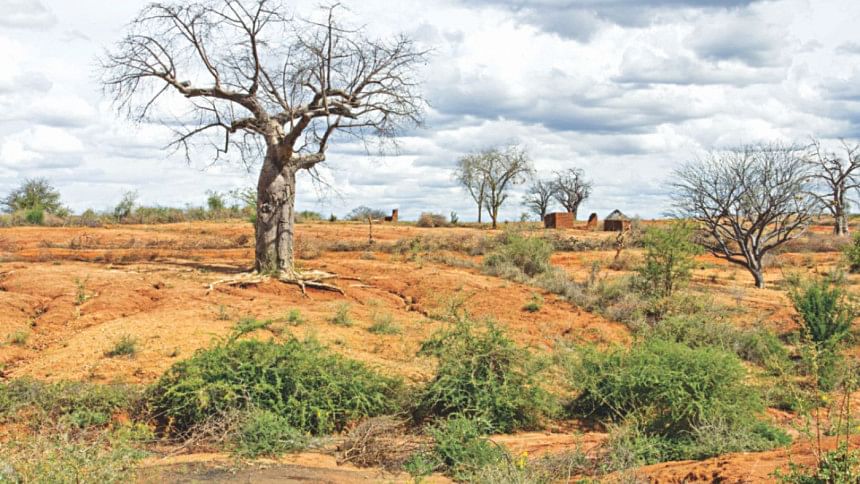What we can learn from the Green Climate Fund crisis

The Green Climate Fund (GCF) was created under the United Nations Framework Convention on Climate Change (UNFCCC) to channel up to USD 100 billion a year from 2020 onwards from the developed countries to the developing countries to help them tackle climate change through both mitigation and adaptation projects. The fund started four years ago with its headquarters in Songdo, South Korea, and currently has around USD 10 billion for disbursal for such projects. Decisions are made at the quarterly board meetings which have an equal number of members from developed as well as developing countries.
The 20th board meeting of the GCF in Songdo just concluded last week with the board arguing about procedural matters for days, unable to make any decisions on about a billion dollars' worth of proposals and finally with the chief executive officer resigning with immediate effect (for personal reasons). This meltdown at the board level and resignation of the CEO is a symptom of the fact that the GCF has some major flaws which need to be fixed if it is to fulfill its promise of managing USD 100 billion a year from 2020 onwards to support efforts to tackle climate change in the developing countries.
Hence the crisis in the GCF presents an opportunity to review what has gone wrong and try to rectify it going forward. It is in that spirit that I will point out a major flaw, in my view, in the design and functions of the GCF so far with some recommendations on how to rectify it going forward.
The major flaw I am referring to is the following undeniable fact: since the fund's creation and activities over several years now, it has been unable to provide funding for adaptation to the most vulnerable communities and countries, at any substantial scale, despite this being one of its core mandates. While the GCF Board took a laudable early decision to allocate half its funds to adaptation, and within that to prioritise the most vulnerable developing countries, unfortunately that goal has remained unfulfilled in practice.
While there are many reasons for this failure, I will focus on one which can now be addressed, namely the difference between acting as a "bank" and as a "fund". I will argue that the GCF from the beginning has seen itself as a bank that must see returns on its investments in terms of repayment of loans and hence looked for "bankable" projects to fund and also emphasised fiduciary and fund management capacities of both recipient country governments and entities applying for funds for the needs of the most vulnerable. Most of the senior management was recruited from the banking sector whose experience had hardwired this banking mentality.
However, the GCF is the Green Climate "Fund" and not the Green Climate "Bank". It has a mandate to not just give loans and seek repayment of those loans but also give grants for which the return is supposed to be effective tackling of the climate problem, especially when it comes to adaptation.
This fundamental difference in objectives played out in terms of the two major areas of projects, namely mitigation projects versus adaptation projects. Mitigation projects have now become very easy to develop and always have a revenue stream that allows them to repay the investment and hence the GCF has been able to support a substantial number of quite sizeable mitigation projects.
Adaptation, on the other hand, has no revenue stream to repay a loan (and hence requires grant funding) and is also normatively meant to reach the most vulnerable communities in the most vulnerable developing countries which also tend to be the poorest communities and countries and the least capable of producing "bankable project proposals". This has led to the failure of the GCF to reach those it was supposed to support for adaptation.
Here are a number of recommendations that may help rectify this major design failure of the GCF.
Firstly, I advise the separation of loans (which are fine for mitigation projects) from grants (which should be mostly for adaptation projects) with the appointment of a co-CEO (or at least a deputy CEO) for adaptation grants. This position should be held by a person with grant-making experience and not a banker.
Secondly, the adaptation division of the GCF must proactively seek out the most vulnerable communities and countries and provide support to them (either directly or through intermediaries) to enable them to be able to access the funding. Simply sitting in Songdo and expecting to receive "bankable" proposals has resulted in very few proposals from those who need the funding the most. Even though the GCF is providing developing countries with so-called readiness funds, the efforts need to include support to sustain national-level capacity building by national institutions rather than by fly-in, fly-out international consultants as is being done now.
Thirdly, and most importantly, the GCF must provide better guidance on how to prepare adaptation projects so that the case of two proposals (one from Bangladesh and the other from Ethiopia) being rejected by the GCF Board, after having been approved by the technical evaluations, is not repeated. This lack of clear guidance has been a major impediment in getting good adaptation proposals (and is a major barrier for the most vulnerable who are also the least capable).
To be fair to the GCF, this lack of clarity is based on a genuine confusion between general development and adaptation to climate change and the GCF is quite correct to insist on proposals being genuinely adaptation-based and not just development proposals dressed up as adaptation.
However, insisting on a strict distinction has become counterproductive and the GCF needs to provide better guidance on how proposals can be better prepared to address climate change impacts by allowing for development co-benefits (this is especially important when supporting the most vulnerable communities). It may well be worth the GCF learning from (and perhaps even supporting) the Least Developed Countries Fund (LDCF) and the Adaptation Fund (AF), both of which have developed these capabilities over many years and in fact have a pipeline of approved adaptation projects without the funds to support them.
Hence if the GCF takes this opportunity to go back to the drawing board and address some of the flaws in its design as well as practice, some good may indeed come out of the fiasco of the 20th board meeting.
Saleemul Huq is the director of the International Centre for Climate Change and Development at the Independent University, Bangladesh.
Email: [email protected]










Comments